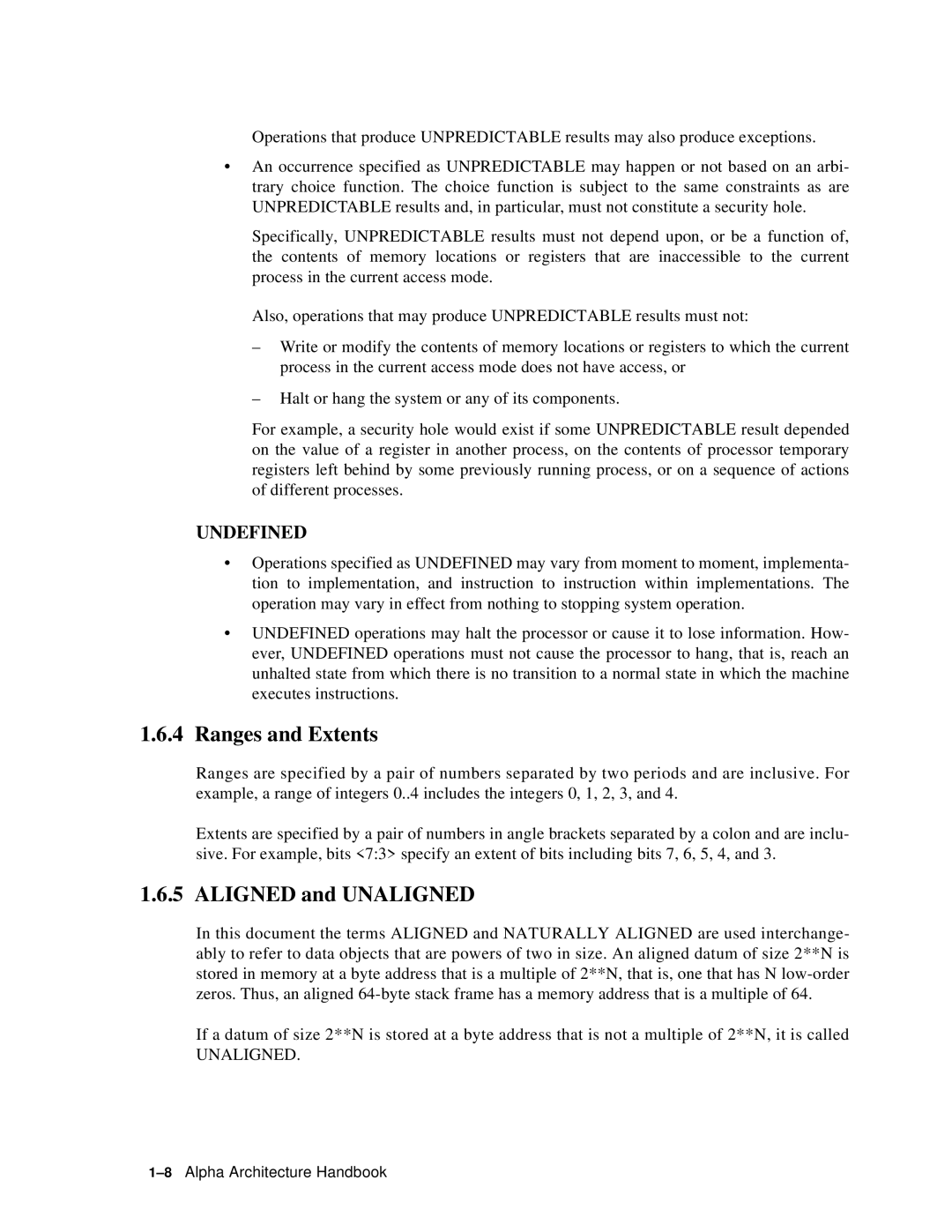Operations that produce UNPREDICTABLE results may also produce exceptions.
•An occurrence specified as UNPREDICTABLE may happen or not based on an arbi- trary choice function. The choice function is subject to the same constraints as are UNPREDICTABLE results and, in particular, must not constitute a security hole.
Specifically, UNPREDICTABLE results must not depend upon, or be a function of, the contents of memory locations or registers that are inaccessible to the current process in the current access mode.
Also, operations that may produce UNPREDICTABLE results must not:
–Write or modify the contents of memory locations or registers to which the current process in the current access mode does not have access, or
–Halt or hang the system or any of its components.
For example, a security hole would exist if some UNPREDICTABLE result depended on the value of a register in another process, on the contents of processor temporary registers left behind by some previously running process, or on a sequence of actions of different processes.
UNDEFINED
•Operations specified as UNDEFINED may vary from moment to moment, implementa- tion to implementation, and instruction to instruction within implementations. The operation may vary in effect from nothing to stopping system operation.
•UNDEFINED operations may halt the processor or cause it to lose information. How- ever, UNDEFINED operations must not cause the processor to hang, that is, reach an unhalted state from which there is no transition to a normal state in which the machine executes instructions.
1.6.4Ranges and Extents
Ranges are specified by a pair of numbers separated by two periods and are inclusive. For example, a range of integers 0..4 includes the integers 0, 1, 2, 3, and 4.
Extents are specified by a pair of numbers in angle brackets separated by a colon and are inclu- sive. For example, bits <7:3> specify an extent of bits including bits 7, 6, 5, 4, and 3.
1.6.5 ALIGNED and UNALIGNED
In this document the terms ALIGNED and NATURALLY ALIGNED are used interchange- ably to refer to data objects that are powers of two in size. An aligned datum of size 2**N is stored in memory at a byte address that is a multiple of 2**N, that is, one that has N
If a datum of size 2**N is stored at a byte address that is not a multiple of 2**N, it is called
